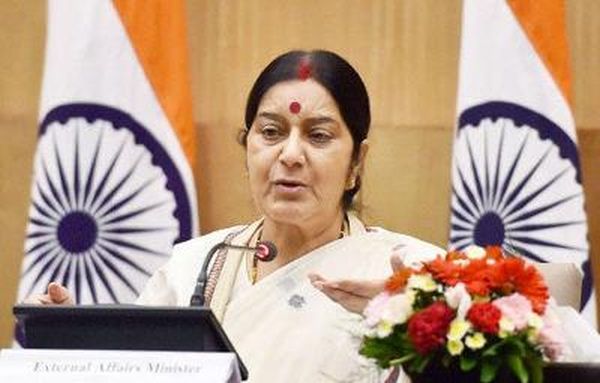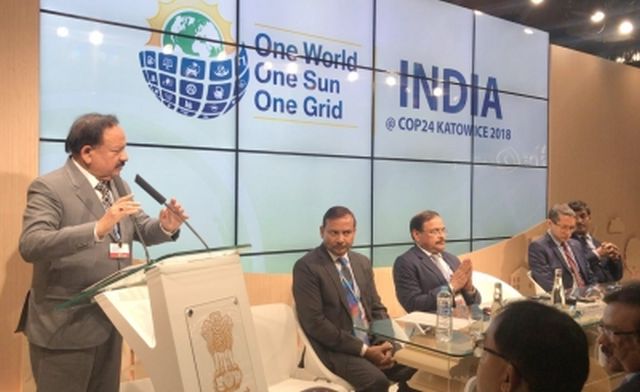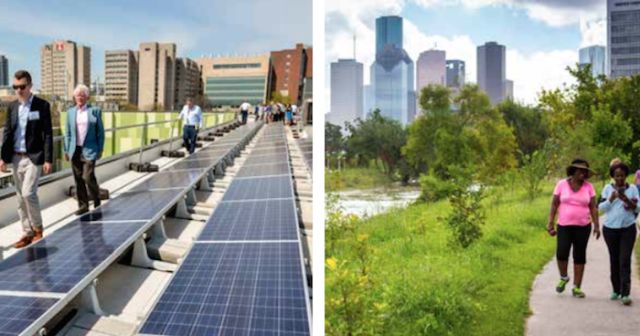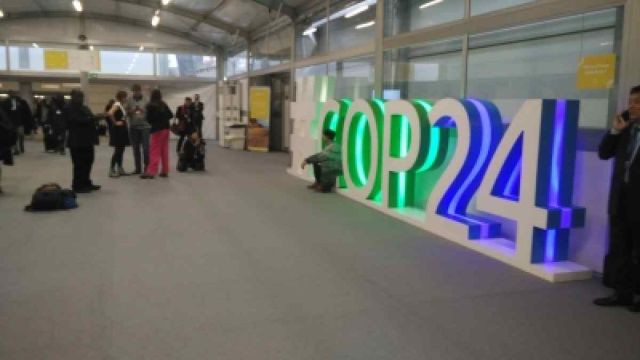
by admin | May 25, 2021 | News, Politics
 New Delhi : Terrorism, proliferation of weapons of mass destruction (WMDs) and climate change are the three critical challenges the world is facing today, External Affairs Minister Sushma Swaraj said on Wednesday.
New Delhi : Terrorism, proliferation of weapons of mass destruction (WMDs) and climate change are the three critical challenges the world is facing today, External Affairs Minister Sushma Swaraj said on Wednesday.
“There was a time when India would talk about terrorism, and it would be treated as a law and order issue on many global platforms,” Sushma Swaraj said while addressing 2019’s Raisina Dialogue, India’s flagship annual geopolitical and geostrategic conference, organised by the External Affairs Ministry in partnership with the Observer Research Foundation (ORF) think tank.
“Today, no country, big or small, is immune from this existential threat, particularly terrorism, actively supported and sponsored by states,” she said.
“In this digital age, the challenge is even greater, with a greater vulnerability to radicalisation.”
Sushma Swaraj recalled that in 1996 India proposed a draft Comprehensive Convention on International Terrorism (CCIT) but lamented it has remained just a draft till today “because we cannot agree on a common definition”.
“Ensuring zero-tolerance towards terrorism, and those who use it as an instrument of convenience, is the need of the hour,” she said.
The second threat, she said, is the threat of proliferation of WMDs.
Thirdly, she said, developing and under-developed nations are the worst victims of climate change, with neither the capacity nor the resources to meet the crisis.
“We have risen to meet the challenge. India, in partnership with France, launched the International Solar Alliance (ISA) with the participation of 120 countries,” Sushma Swaraj said.
In her address, she also outlined the five elements of India’s global engagement over the last four-and-a-half years.
Firstly, Sushma Swaraj said, India has rebuilt its bridges with its immediate and extended neighbours.
“In particular, Prime Minister’s strategic vision of SAGAR has spurred a qualitative transformation in India’s engagement with the Indian Ocean Region in recent years,” she said.
“Our revitalised Act East and Think West paradigms have further broadened the reach of our strategic and economic neighbourhood.”
Secondly, Sushma Swaraj said, New Delhi is shaping its relationships in a manner that synchronises with India’s economic priorities.
“With this ‘diplomacy for development’ approach, each global interaction is now focussed on building partnerships to promote our transformative flagship programmes such as Make in India, Smart Cities, Digital India, AMRUT and Namami Gange,” she stated.
“Third, we are focussed on making India a human resource power to be reckoned with by connecting our talented youth to global opportunities.
“This is being achieved through Skill India partnerships with several countries, as well as under the aegis of the GIAN programme and various private sector partnerships under Digital India.”
Fourthly, the External Affairs Minister said, India is building sustainable development partnerships stretching from the Indian Ocean and Pacific Islands to the Caribbean, and from the continent of Africa to the Americas.
“These initiatives have expanded; both in geographical reach and sectoral coverage, and now include Lines of Credit and grants, technical consultancy, educational scholarships and a range of capacity-building programmes,” she said.
Finally, Sushma Swaraj said, India is leading the way in reconfiguring and reinvigorating global institutions and organisations.
“Whether it is by founding the International Solar Alliance, which will benefit our energy security and also combat climate change; or our active role in humanitarian and disaster relief operations in our neighbourhood; or our membership of key institutions of global governance – India is a proactive and constructive contributor to promoting and upholding global peace and security,” she said.
This year’s Raisina Dialogue, which is in its fourth edition, is being attended by over 600 delegates from 92 countries, including influential political leaders, strategic thinkers, policy practitioners, technology innovators, business representatives and academics.
—IANS

by admin | May 25, 2021 | Economy, News
 By Vishal Gulati,
By Vishal Gulati,
New Delhi : Clearing the smoke of uncertainty over the issue of a cleaner environment, India this year succeeded in its multilateral diplomacy to evolve a roadmap for the international community to decisively address climate change.
Also, India’s success in renewable energy auctions, in reducing emissions besides its largest commitment to eliminate all single-use plastic in the country by 2022, has enabled it to win accolades globally.
Even the Indian private sector is not lagging behind in joining the ranks of leading global companies that have committed to set a scientific target to be carbon negative.
Experts believe it’s a win-win situation for India as its success in the just concluded diplomatic intrigues in the coalfields of Katowice in Poland lies in promoting a more fine-tuned form of responsibility — not just among countries, but within them as well.
Eventually, the 24th Conference of Parties to the United Nations Framework Convention on Climate Change, or COP24, produced a deal that paves the way for implementing the 2015 Paris Agreement, which is supposed to replace the existing Kyoto Protocol in 2020.
Voicing its reservations at the COP24 talks, which saw a holdback due to certain objections of the US, Russia, Saudi Arabia, Kuwait, Brazil and Turkey, India went vocal over the lack of equity in the rules relating to the global stocktaking in the rulebook that implements the 2015 Paris Climate Change Agreement.
In the same breath, India signaled that it is ready to update its nationally determined contributions or NDCs if other countries also do so.
Also playing a crucial role to mitigate climate change and other environmental challenges, India in June announced it would strengthen its support with a 25 per cent increase over its contribution to the $15 million Global Environment Facility’s new investment cycle.
India has committed that by 2030, as much as 40 per cent of its installed energy capacity will be based on non-fossil fuels.
India has also won global accolades for opting for green technologies.
India is on track to meet a majority of its Paris goals and become a global climate leader by meeting its targets a decade earlier, US-based Institute for Energy Economics and Financial Analysis (IEEFA) said in a report on the margins of COP24.
The Paris agreement enjoins each country to outline, update and communicate its post-2020 NDCs reflecting its ambition for reducing emissions.
According to IEEFA, India’s NDCs included three key targets: To achieve 40 per cent of electric power installed capacity from non-fossil fuels by 2030, to reduce the emissions intensity of its gross domestic product by 33-35 per cent from the 2005 level by 2030 and to create an additional 2.5-3 billion tonnes of carbon sinks — reservoirs that accumulate and store carbon dioxide — through the planting of additional forest and tree cover.
R.R. Rashmi, India’s former climate negotiator and now a Fellow at The Energy Resource Institute (TERI), told IANS at COP24: “In terms of India’s efforts in reducing its emissions relative to its economic growth, it is a fairly positive story and it is more significant because the energy growth is tremendous.”
Even the World Bank praised India’s success in renewable energy auctions that delivered record-setting low prices for solar power.
“There is a great opportunity now for countries to learn from each other to accelerate the uptake of good policies,” said Riccardo Puliti, Senior Director for Energy and Extractives at the World Bank, in a report this month.
“For example, how did India structure its renewable energy auctions to deliver record-setting low prices for solar?”
A Germanwatch report says carbon dioxide emissions are rising again globally but India’s ranking has improved by three points.
But India moved to 11th rank from last year’s 14th as a result of improved performance in renewable energy, comparatively low levels of per capita emissions and a relatively ambitious mitigation target for 2030, said Germanwatch’s Climate Change Performance Index 2019.
Even India’s private sector is not lagging in committing carbon neutral targets.
Taking the lead, Mahindra & Mahindra, the leading manufacturer of utility vehicles and part of the $20.7 billion Mahindra Group, announced its commitment to become a carbon neutral company by 2040.
Mahindra Group Chairman Anand Mahindra announced this at the Global Climate Action Summit (GCAS) in San Francisco in September.
Likewise, India’s Dalmia Cement Group CEO Mahendra Singhi announced at the GCAS that the company too aims to be carbon negative by 2040.
On the political front, Prime Minister Narendra Modi was selected for this year’s Champions of the Earth award — the UN’s highest environmental honour — along with French President Emmanuel Macron.
(Vishal Gulati can be contacted at vishal.g@ians.in)
—IANS

by admin | May 25, 2021 | Opinions
 By Arul Louis,
By Arul Louis,
Is the looming climate change apocalypse real? In the clearly-demarcated battle lines, the good guys are those who believe it is and the bad guys, like US President Donald Trump, are the doubters as any progressive and most of the media would affirm.
Yet it is also the good guys, the warriors against climate change, who strain the credibility of the phenomenon’s reality – and it is for them to affirm its reality through their personal examples.
On Thursday, former US Secretary of State John Kerry published an op-ed in The New York Times headlined, “Forget Trump. We All Must Act on Climate Change.” While he had suggestions for US lawmakers on forcing Trump to act, he was silent on the personal responsibilities for fighting climate change.
At the time that leaders were grappling with climate change strategies at the United Nations conference in Katowice, Poland, he had been to India and danced at the wedding of a petroleum billionaire’s daughter.
On the round trip by air he would have been responsible for about 2.7 tonnes of carbon dioxide emissions, besides other greenhouse gases like nitrous oxides. (For comparison, a typical car in the US puts out 4.6 tonnes of carbon dioxide in a year.)
Here is a fair question: If the climate change apocalypse was imminent, as he noted in his article, why did he undertake that journey?
It’s easy to preach about fighting climate change to the government, lawmakers and countries like India and China (which are often hypocritically blamed for the greenhouse gas buildup by the progressives – though not this time by Kerry – and less hypocritically by the deniers).
Here’s the bottom line: An American emits nearly 15.53 tonnes of carbon dioxide each year, which is nearly ten times that of an Indian’s 1.58 tonnes. (And Canada under Prime Minister Justin Trudeau, the high priest of sanctimony, is not far behind Trump’s America: the per capita emission is 15.32 tonnes.)
And countries like France have a comfortable standard of living with a per capita emission of 4.37 tonnes, which is less than a third of an American’s.
So, realistically, action has to begin with appeals to individuals to cut down their greenhouse rather than looking to governments and lawmakers – or telling developing countries to do it for them.
According to a 2016 Pew Research Center survey, 63 per cent of Americans believe that lifestyle changes are needed to combat climate change and 68 per cent of Democrats believe it is a serious problem.
Despite all that, it is easy to see why it is almost impossible to call for lifestyle changes.
Just look at France. A violent popular uprising drove President Emmanuel Macron to retreat from his daring attack on climate change in the name of the Paris Treaty with an with enhanced tax on petrol.
Forget about rousing individuals or society in the climate change war; the Democratic-run New York that riles against Trump and the deniers is not going to enrage its citizenry by banning the 30,000 lights on an eight-kilometre strand on the city’s Christmas tree in a country that produces about 30 per cent of its electricity from coal.
Meat diets are another glaring example of the hypocrisy. A study led by researchers at Linda Loma University concluded that because cattle farming for beef is greenhouse intensive, the US can right now reach about 50 to 75 per cent of its greenhouse gas reduction targets for 2020 by merely giving up beef for legumes as a protein source.
Not only would some of the activists not speak out against meat-eating in their own countries, but some of their Indian counterparts want to promote beef-eating in India.
As for Indian activists, greenhouse gas-generating trips to tell the British Parliament to stop mining in India is an ego trip, but not demanding the British do something about the 5.99 tonnes of carbon dioxide gas that each of them generates every year – especially the politicians who put out a lot more gas, literally and figuratively – than the average Brit.
So is the situation so hopeless and the apocalypse inevitable?
The Pew survey found that 24 per cent of Indians believe that technology can solve the climate change problem – and definitely that’s the way forward as technology is bringing down the price of green energy. And China and India can make the most significant contributions as they leap-frog to greener technologies – and no thanks to preaching from the activists of the industrialised West. So can the other developing countries.
In the industrialised nations (as elsewhere), the greenback is more powerful than greentalk: As technology advances, corporations are seeing the monetary benefits of adopting a greener way of doing business.
Meanwhile, may be the generals of climate warriors could tone down their holier-than-thou sermons on the climate change apocalypse and instead lead by example – and try to mobilise their armies of believers to adopt drastic lifestyle changes.
(Arul Louis, who pleads guilty to contributing to greenhouse gas pollution, covers the United Nation from New York. He can be reached at arul.l@ians.in and followed on Twitter @arulouis)
—IANS

by admin | May 25, 2021 | Opinions
 By Vineeth Menon and Shreejith Borthakur,
By Vineeth Menon and Shreejith Borthakur,
While cities cover only two per cent of the global land area, they contribute around 70 per cent of the global greenhouse emissions, one of the main drivers of climate change.
The UN forecasts that urbanisation and population growth could add another 2.5 billion people to urban populations by 2050, with almost 90 per cent living in Asia and Africa. Consequently, the urban contribution to greenhouse gas emissions and climate change will only increase with time.
As a response, various stakeholders have designed climate change resilience products including cool roofs, home insulations, drip irrigation solutions and solar home systems that have seen heightened interest in India. While such products have seen a market, the uptake is concentrated among the richer sections.
The urban poor, who constitute almost 30 per cent of India’s urban population, do not have the knowledge or the capacity to pay for such products. It has always been a challenge to symbiotically combine all four components (informed customer targeting, low-cost marketing, innovative distribution and sales, and nurturing consumer goodwill) to design a marketing strategy for the urban poor. As a response, some organisations have started leveraging community-level leaders (CLLS) as marketing channels for such products.
The rationale for the CLLs comes from the effectiveness of the model in building long-term products resilient to climate change while simultaneously creating livelihoods. Some best practices that can be used to strengthen the efficacy of the CLL mode are:
* Design a product identification framework tool: Each product should be analysed on the basis of four parameters: a) demand for the product (number of households), b) affordability (price), c) profitability (percentage of price), and d) scalability (potential demand across different urban agglomerations). On the basis of analysis, only those products which score high on all parameters should be offered to the market.
* Conduct on-ground demand assessment: Understanding the customer becomes more important in such cases, particularly since the customers knowledge of the product is limited. Hence awareness levels, willingness to pay and customer demand becomes more critical. Such an on-ground assessment can help further shortlist products for a particular set of homogeneous households.
* Provide easy financing options: It is beneficial to help CLLs establish close networks with MFIs and other financial institutions to provide financing facilities to potential consumers, hence enhancing their ability to pay and increasing uptake.
* Segment CLLs based on skillsets and motivation: Classification of CLLs as per their sales skills and motivation is essential for success. Selling different products require different skillsets and a quick analysis can help in this matchmaking. Some parameters which can be used to assess skills include age, educational qualification, business experience, and technical skillsets.
* Capacity building: CLLs need a certain degree of training and it is observed that CLLs find it easier to sell better when trained rather than through close association with their communities.
* Build ownership in CLLs: Instead of making the product available free-of-cost, CLLs should be asked to invest in the product. If required, finance should be made available by partnering with co-operative banks and MFIs; that way one can build ownership in CLLs.
* Design standardised operational procedures (SOPs): Since the business model includes partnerships both with CLLs and product manufacturers, it is necessary to design SOPs to simplify the entire delivery process.
* Develop a clear return policy: To avoid compulsive transactions and selling below market price, it is necessary to have a clear and well-defined return policy to avoid any bottlenecks in the CLL model.
As more and more organisations adopt the CLL model, a conscious integration of the above mentioned practices can stimulate sales, while also creating sustainable livelihoods at the last-mile.
(Vineeth Menon and Shreejith Borthakur are with Intellecap advisory services. The views expressed are personal. They can be contacted at vineeth.menon@intellecap.net and shreejit.borthakur@intellecap.net
—IANS

by admin | May 25, 2021 | Corporate, Corporate Buzz, World
 By Vishal Gulati,
By Vishal Gulati,
Katowice (Poland) : At a time when there is a call for all countries to do more to fight climate change, India is telling the world at the ongoing UN climate negotiations, COP24, that it is in a position to comfortably overachieve its Paris climate change commitments, and will do more.
India had committed that by 2030, as much as 40 per cent of its installed energy capacity will be non-fossil fuel based.
Indian Ministry of New and Renewable Energy Secretary Anand Kumar told IANS here the actual number will be 60 per cent, even without taking into account large hydropower projects.
“Today, India has 73 GW of wind, solar and biomass capacity, and another 22 GW is under construction. Yet another 25 GW is in the process of being tendered out. That leaves 55 GW more to be set up by 2022 for India to meet its target of 175 GW,” Kumar said.
After 2022, India will auction 30 GW of solar and 10 GW of wind every year till 2030. By 2030, the country will have 350 GW of solar and 150 GW of wind installed capacity, he added.
The political phase of the ongoing UN climate negotiations that began on December 12 with ministers and high-level country representatives together with non-party stakeholders entered the last phase.
Each country was sharing its plans for the transformation of economies in line with the 2015 Paris goals.
The negotiations will culminate on Friday, hopefully with an agreement on the Paris rulebook for transparent implementation of the 2015 Paris Agreement — the first global treaty to reduce emissions by all rich and poor nations.
India’s Environment Minister Harsh Vardhan, who attended the climate summit last week, signalled that the country was ready to update its Nationally Determined Contributions (NDCs) if other countries do the same.
India was on track to meet majority of Paris goals and become a global climate leader by meeting one target a decade earlier, US-based Institute for Energy Economics and Financial Analysis (IEEFA) said in report on the margins of the UN climate summit.
The Paris agreement requested each country outline, update and communicate its post-2020 climate actions, known as NDCs, reflecting a country’s ambition for reducing emissions.
According to IEEFA, India’s NDCs included three key targets: To achieve 40 per cent of electric power installed capacity from non-fossil fuel by 2030, to reduce the emissions intensity of its gross domestic product (GDP) by 33-35 per cent from the 2005 level to 2030 and to create an additional 2.5-3.0 billion tonnes of carbon sinks — reservoirs that accumulate and store carbon dioxide, through the planting of additional forest and tree cover.
R.R. Rashmi, India’s former climate negotiator and Fellow at The Energy Resource Institute in New Delhi told IANS: “In terms of India’s efforts in reducing its emissions relative to its economic growth, it is a fairly positive story and it’s more significant because the energy growth is tremendous.”
Favouring the strong Paris rulebook, New Delhi-based Council on Energy Environment and Water Fellow Vaibhav Gupta said the Paris agreement came with a mandate which needs to be balanced and strong.
“The negotiations are stuck on contentious issues because there is no consensus reached by parties one way or another. A strong rulebook should strike a balance between action and support, between mitigation and adaptation, and between science and political will,” he said.
Anirban Ghosh of the Mahindra group said: “Renewables, energy efficiency, electric vehicle are clear win. We don’t need external finance for these items, they pay for themselves.”
India on Wednesday said the Paris agreement was “non-negotiable” and there could be no compromise on the basic principles.
(Vishal Gulati is in Katowice at the invitation of Climate Trends to cover the 24th Conference of the Parties to the UN Framework Convention on Climate Change, known as COP24. He can be contacted at vishal.g@ians.in)
—IANS

 New Delhi : Terrorism, proliferation of weapons of mass destruction (WMDs) and climate change are the three critical challenges the world is facing today, External Affairs Minister Sushma Swaraj said on Wednesday.
New Delhi : Terrorism, proliferation of weapons of mass destruction (WMDs) and climate change are the three critical challenges the world is facing today, External Affairs Minister Sushma Swaraj said on Wednesday.



